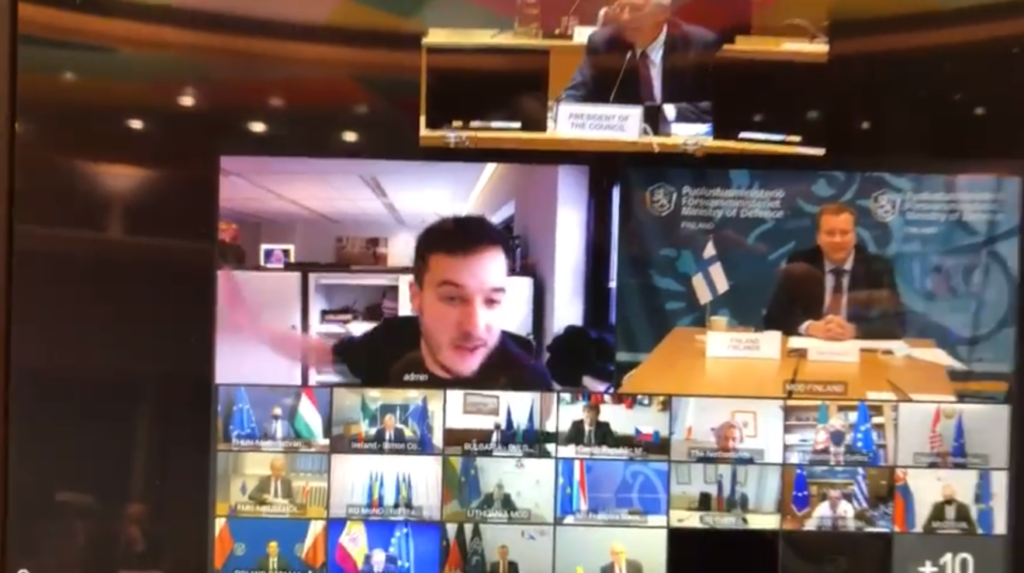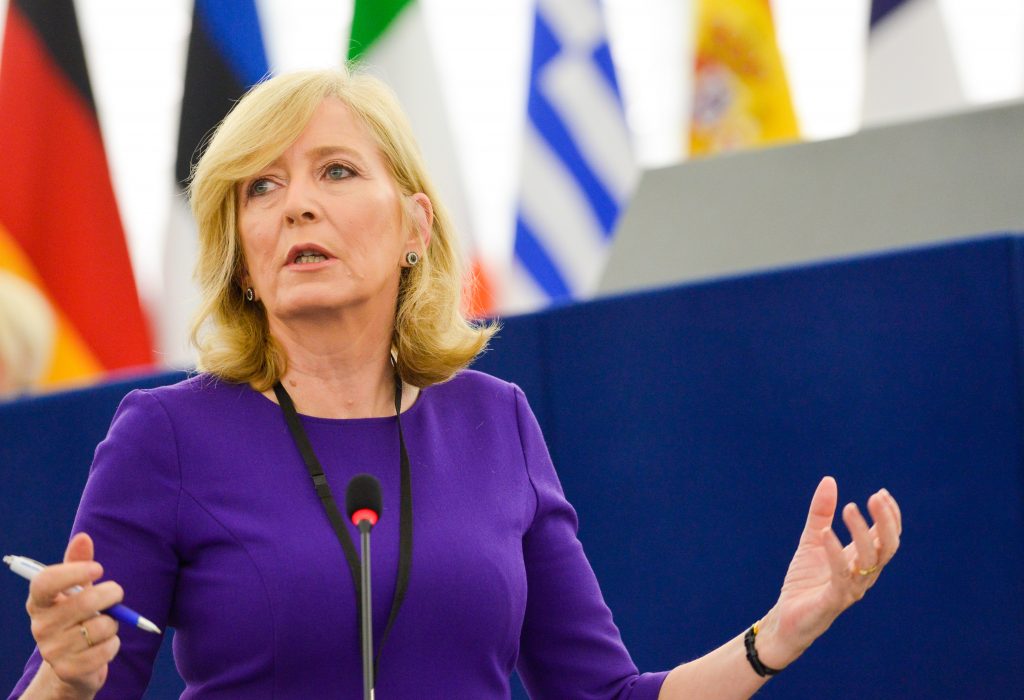The European Parliament has recently adopted a new Statute for the European Ombudsman. Nikos Vogiatzis argues that, while this is a welcome development, the new provisions mainly codify or solidify existing practices, and therefore may not be seen as a significant strengthening of the European Ombudsman’s mandate.

Introduction
After a long process of discussion and negotiation, the EU institutions agreed to revise the Statute of the European Ombudsman (EO). This follows a special legislative procedure, enshrined under Article 228(4) TFEU, in which the European Parliament has the right of initiative (a rare instance in the EU Treaties), the Council consents, and the Commission provides its opinion. It is submitted that the Statute solidifies existing practices and improves clarity about the EO’s procedures. It does not signify a ground-breaking strengthening of the EO’s mandate. In line with the remit of this blog, this post will also reflect on the possible impact of the revised Statute on the EO’s work on transparency – although it should be noted at the outset that the new Statute does not include many provisions focusing on that particular aspect of the EO’s work, neither was it prepared for that purpose (ie to serve transparency only).
The EO and Transparency
Some preliminary remarks on the EO’s mandate might be useful. The EO is the EU ombud office that examines instances of alleged maladministration in the activities of the EU institutions, bodies, offices and agencies. They have no competence over national authorities, even when these authorities are implementing EU law. The EO is not, of course, a judicial institution: but she possesses a number of non-binding tools that can be used to convince the EU institutions to comply with her recommendations.
The readers of this blog will be aware that transparency has always been at the forefront of the EO’s efforts to improve administrative practice in the EU. The first EO, Jacob Söderman, was a strong proponent of transparency, and launched a significant inquiry into the rules of the EU institutions on access as early as in 1996. The current office holder, Emily O’Reilly, has also launched important inquiries into – among other areas – the transparency of trilogues and the transparency of the Council legislative process (see here for a critical discussion). This latter inquiry led to the submission of a special report to the European Parliament – the first in almost 5 years, and the latest to date. Important initiatives have also been undertaken regarding transparency of the EU institutions in the context of the Covid-19 crisis.

Transparency and access to documents inquiries have consistently featured among the highest number of complaints received and processed by the office. For that reason as well, the EO decided in 2018 to launch a fast-track procedure for access to documents complaints. Key features of this procedure include the EO’s decision on whether an inquiry can be opened within five working days, and the aim to make an overall decision within 40 working days. On the one hand, since the key piece of legislation in the field, Regulation 1049/2001 on access to documents, lists both the judicial and the extra-judicial avenue as possibilities for redress available to dissatisfied applicants, the EO understandably needs to make a convincing case as to how applicants will benefit from contacting the EO. On the other, however, it has rightly been observed that due process rights cannot be undermined in the interests of efficiency.
The New Statute and Transparency
The new Statute contains few provisions that would enable the Ombudsman to make a stronger contribution specifically on transparency. One exception might be Article 8, namely inquiries in the context of whistleblowing. Nevertheless, the EO had already conducted a large-scale own-initiative inquiry concerning EU institutions’ obligations to introduce rules that would protect whistleblowers. Some might observe that the new (and rather detailed) provisions on EU classified information (Article 5) will effectively improve transparency. That may be the case but in essence, these provisions strengthen the EO’s investigatory powers in any area that could be the subject of an inquiry, including, of course, transparency and access to documents.
In any case, given that transparency is one of the key aspects of the work of the office (and part of the concept of ‘maladministration’, a matter returned to below), it is worth considering some of the new provisions of the Statute that have been highlighted by EU institutions or by the EO herself.
The first provision, Article 3(3) of the Regulation, contains a more elaborate explanation of the EO’s remit with regard to own-initiative inquiries. In particular, it provides that the EO
‘may conduct own-initiative inquiries whenever he or she finds grounds, and in particular in repeated, systemic or particularly serious instances of maladministration, in order to address those instances as an issue of public interest. In the context of such inquiries, he or she may also make proposals and initiatives to promote administrative best practices within Union institutions, bodies, offices and agencies’.
This is a significant power that may not be available to all ombud offices in the EU and beyond. Nevertheless, it would be misleading to think that this is a ground-breaking development: effectively since the establishment of the office, the EO has been doing exactly that, on the basis of what is now Article 228(1) TFEU. The current office holder, Emily O’Reilly, has developed further the use of own-initiative or strategic inquiries with a view to ‘targeting’ areas in which administrative practices could be improved. The above does not mean that this reference in the new Statute is insignificant: it underlines the EO’s proactive work, and also (and relatedly) that the EO acts on behalf of the ‘public interest’. Achieving a balance between strategic work and responding to individual complaints (some of which may not raise systemic issues) is a matter of (sometimes intense) debate. But certainly, the new Statute can be seen as recognition of work that was undertaken in past years, even though legally the use of own-initiative inquiries has always been open to (and used by) office-holders.
A new provision requires the EO to not have been member of national governments, the European Parliament, the European Council or the European Commission within the two years preceding the date of publication of the call for nominations. This ‘cooling off’ period seeks to strengthen the EO’s independence.
Another interesting provision is the faculty for the EO to be heard before the European Parliament in the context of an inquiry ‘on his or her own initiative or at the request of the European Parliament’ (Article 4(4)). This provision accentuates the institutional link between the EO and Parliament. Whether and to what extent the EO will make use of this possibility remains to be seen. If anything, the (existing) possibility to submit a special report to the European Parliament has been used very infrequently. In any case, it is a welcome development that would provide the EO with an additional opportunity to either raise awareness about an inquiry or push for compliance.
Noteworthy is also a new provision on the EO’s appointment, namely Article 11(2) of the Regulation: among others, it requires the EO to not have been ‘[member] of national governments or [member] of the European Parliament, the European Council or the European Commission within the two years preceding the date of publication of the call for nominations’ so as to be eligible for election by the European Parliament. This ‘cooling off’ period seeks to strengthen the EO’s independence – although, to this author’s knowledge, none of the office holders (but not necessarily all of the candidates) to date would have failed to meet this criterion (they were all former national ombuds in their respective countries). Accordingly, Article 16(1) also seeks to strengthen the EO’s independence as it states that the EO ‘shall be awarded an adequate budget, sufficient to ensure the Ombudsman’s independence and the performance of his or her duties’. The question of resources has been a persistent challenge for the EO’s office. However, whether this article will have a meaningful impact on resources allocated to the office remains to be seen.
The new Statute also appears to try to regulate further the conduct of the EO in the context of inquiries. The steps that need to be taken by the EO, at various stages of the procedure, are articulated in a clearer way, and existing practice is confirmed (see, for example, Article 4(3) on the use of special reports). And overall, it is a clearer document than its predecessor. Nevertheless, it is also useful to remember that, as an extra-judicial institution, the EO requires some flexibility and creativity as well. Not everything can be regulated: for example, few would doubt that the ‘Award for Good Administration’ established by the EO is a welcome initiative that has been embraced by the EU institutions.
The new Statute provides further clarity on the EO’s work and solidifies or codifies existing practice by the office. But it does not go as far as earlier drafts that had been proposed by the European Parliament.
In terms of access to the EO, earlier proposals for a three-year period were eventually dropped. Thus, Article 2(3) provides that a ‘complaint shall be lodged within two years of the date on which the facts on which it is based came to the attention of the complainant’. In its Opinion, which also provides insights into the views of one of the institutions involved in the negotiations, the Commission had observed that the existing two-year timeframe had not raised any issues and that an extension of that deadline could mean that it would become more difficult for the administration to address the complaint.
Conclusion
The new Statute provides further clarity on the EO’s work and solidifies or codifies existing practice by the office. The more developed formulation about own-initiative inquiries, for example, may well be seen within and beyond the EO’s office as recognition by the EU institutions of systemic work that was undertaken in past years. That being said, the Statute in and of itself will not strengthen the EO’s work on transparency because it was not created for that purpose. The office has always prioritised transparency, and this is likely to continue in the foreseeable future. Of course, how one assesses the EO’s contribution to transparency, as an alternative to court proceedings perhaps or other means of action, is a matter of debate.
In addition, the Statute does not go as far as earlier drafts that had been proposed by the European Parliament; it was deemed that institutional compromise was essential in order to find agreement. A fuller analysis is required to capture the background and compromises that were reached. It will also be interesting to await the ‘Implementing Provisions’ that will be adopted on the basis of this Regulation (for the current version, see here).
As a concluding remark, it is noted that the Statute could not, of course, have addressed all of the pressing issues surrounding the EO’s mandate. Some questions appear to remain unanswered. Most notably: what are the boundaries of maladministration? And more generally: when is the EO activist? It has emerged that there had been pressures, resisted by MEPs, to define maladministration. If that is the case, it may be assumed that the EO will continue to rely on the very broad definition of maladministration that was adopted by Söderman at the early days of this EU body. For those subscribing to a more creative and flexible extra-judicial accountability office (taking also into account the absence of enforceable powers), the lack of engagement with these questions in the Statute may not be deemed a serious omission.
Nikos Vogiatzis is Senior Lecturer at the School of Law, University of Essex. His publications include the monograph The European Ombudsman and Good Administration in the European Union (Palgrave Macmillan, 2018) and a co-authored article (with Natassa Athanasiadou) on the ‘EU Queries’ (German Law Journal, 2021).

